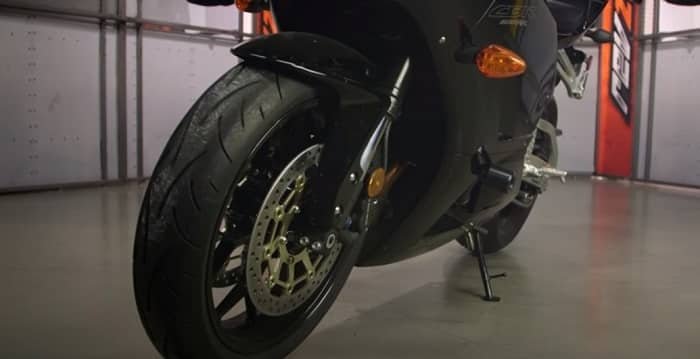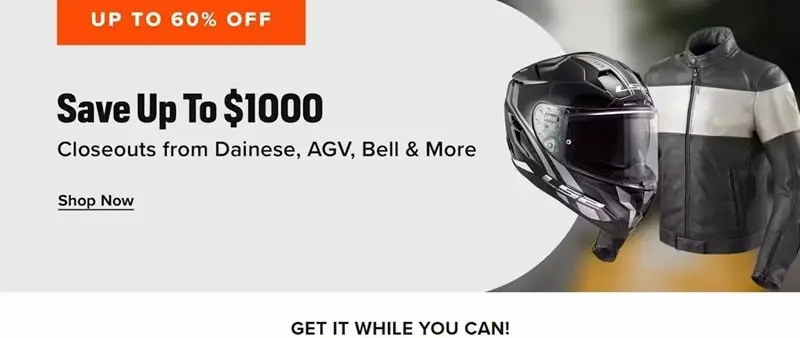Deprecated: mb_convert_encoding(): Handling HTML entities via mbstring is deprecated; use htmlspecialchars, htmlentities, or mb_encode_numericentity/mb_decode_numericentity instead in /home/u598013642/domains/motorcyclegear101.com/public_html/wp-content/themes/acabado/functions.php on line 2160
Deprecated: mb_convert_encoding(): Handling HTML entities via mbstring is deprecated; use htmlspecialchars, htmlentities, or mb_encode_numericentity/mb_decode_numericentity instead in /home/u598013642/domains/motorcyclegear101.com/public_html/wp-content/themes/acabado/functions.php on line 2160
Deprecated: mb_convert_encoding(): Handling HTML entities via mbstring is deprecated; use htmlspecialchars, htmlentities, or mb_encode_numericentity/mb_decode_numericentity instead in /home/u598013642/domains/motorcyclegear101.com/public_html/wp-content/themes/acabado/functions.php on line 2160
Deprecated: mb_convert_encoding(): Handling HTML entities via mbstring is deprecated; use htmlspecialchars, htmlentities, or mb_encode_numericentity/mb_decode_numericentity instead in /home/u598013642/domains/motorcyclegear101.com/public_html/wp-content/themes/acabado/functions.php on line 2160
Deprecated: mb_convert_encoding(): Handling HTML entities via mbstring is deprecated; use htmlspecialchars, htmlentities, or mb_encode_numericentity/mb_decode_numericentity instead in /home/u598013642/domains/motorcyclegear101.com/public_html/wp-content/themes/acabado/functions.php on line 2160
Nobody wants anything bad to happen to their motorcycle, which is why lots of us consider bolting frame sliders to our bikes. But is a frame slider going to save your bacon, or it could have potentially caused more harm in a crash?
Let’s be honest, when bikes tip over at the gas station or in your garage, that’s a pretty common way for a motorcycle to succumb to gravity. In those scenarios, frame sliders are a great investment and are totally worth it.
What Do Frame Sliders Do On a Motorcycle?
Frame sliders, crash bobbins, bearing protectors, whatever you call them, they’re designed to help protect vulnerable and expensive parts when your motorcycle tilts off of its tires.
The theory is that by positioning a sacrificial contact point on the side of the bike, that item will take the brunt of the impact. The slider will take the abrasion instead of your bodywork, your frame, or your engine cases.
This whole crash protection conversation would be simpler if these things were just called tip over protectors.
Even the crappiest kits on the market are going to do something to prevent harm if your bike just falls over at a standstill.
Motorcycles are made to move, and once you add kinetic energy by ramping up the speed, things get a lot harder to predict.
How well frame sliders work in a crash depends on many factors. Like, how your bike went down, was it violent like a high side, or was it more gradual like a front-end push in a sweeping corner?
The surface you crash on is also an important factor. Asphalt may be abrasive, but at least it’s flat.
Soft surfaces like the grassy shoulder of a highway or the gravel trap at a racetrack are likely to cause your bike to dig in and start to cartwheel, and that’s when things get badly damaged.
High-speed crashes are unpredictable, capricious SOBs, so you have to have reasonable expectations.
Now that we recognize that frame sliders aren’t a magical force field, we can talk about these accessories like reasonable people.

For starters, frame sliders come in two styles: you’ve got your cut kits and your no cut kits.
Cut kits require sawing holes in your bodywork for the frame slider to pass through, whereas no cut kits use brackets to position the slider around the fairing.
If the goal is to protect your bodywork, why would you ever want to drill a hole in it? Well, as a general rule, cut kits are more structurally sound.
The frame slider’s location and its mounting system haven’t been compromised to work around the bodywork, so the slider is more likely to stay put and do its job in a crash.
Frame sliders also come in varying lengths, from little short pucks that tuck in against the bodywork to long ones.
As a general rule on the street, since you’re looking at stationary tip-overs or low-speed falls, a longer slider is better since it will keep more parts off the ground.
At the same time, that longer slider is more likely to get bent or break it’s mounting hardware if it gets a lot of force applied to it in a faster crash.
That’s why guys who ride at the track or racing tend to run shorter frame sliders.
They won’t do as good a job of keeping your bodywork pretty, but they’re less likely to get wrenched off to keep the bike lower to the ground.
It’s less likely to tumble, and they’ll still protect the important stuff like the frame and the engine.
If you’re serious about crashing like I am, then you not only have frame sliders, you also have case covers and axle sliders, so you have lots of sacrificial points of contact.
Whether you’re riding on the track or the street, all of this protection isn’t going to do much for a motorcycle that’s cartwheeling toward the horizon.
That brings us to the contentious bit of forum folklore that says frame sliders will cause your bike to flip over and tumble.
There is some truth to the forum posts; remember how I said that longer sliders would hold your bike up, but they also have more leverage on the mounting hardware?
Both of those things make it more likely that your bike is going to tumble if you crash at speed, especially if you slide on to the softer ground or if the puck isn’t made from a suitably low friction material.
Blingy pieces made from aluminum or chrome steel aren’t going to glide across the ground smoothly and are liable to snag and send your bike into the air.
For the puck to be effective, it needs to be made from a low friction material that’s durable and even a little resilient that it absorbs some impact energy.
That’s why brands with half a brain make their pucks from synthetic polymers.
If you’re looking at a kit, so it comes with actual carbon fiber sliders, it might as well be a joke because CF has no abrasion resistance, and it’s going to shatter as soon as it touches the ground.
That brings me to my final words of advice. Frame sliders and other crash protection like case covers and axial sliders are a great investment but don’t buy cheap crap off eBay.
With frame sliders, you definitely get what you pay for, so it’s really important to buy from a reputable brand that has put some R&D into its design.
Types Of Frame Slider And Which Are Best
Crash sliders originally started on race bikes. They tried to find a way to keep their frames from being ground away to nothing when their bikes hit the deck and slid down the track.
However, as things evolved, street riders saw it and either liked the style or liked the possibility of protecting other parts of their bike beside the frame.
One of the things you want to think about when you’re purchasing a set of crash lighters is the length of the slider.
Generally speaking, a shorter slider will be better for high-speed scenarios, and a longer slider will be better for helping out in the driveway or perhaps parking lot situations. I’ll explain why in just a moment.
We’ve got to analyze how a crash happens. First, the bike goes down, and then the bike slides across the pavement. The reason this is important is that there are two stages to this.
You’ve got that initial impact that needs to be absorbed, and then you have the bikes sliding down the street. We need to keep the bike elevated up off the pavement.
The sliders’ length matters because, in a high-speed scenario like a track crash, the bike has a natural tendency to want to flip over when it snags something.
The taller slider is going to give you a little bit more leverage. That means the bike will be more prone to flipping over or barrel rolling, and that’s the stuff that makes crashes expensive.
For those of you who are riding on the street and who don’t typically hit the same speeds you would on a track, the longer sliders can be to your benefit.
You may not wind up having all the high-speed protection in the world. However, if you just drop your bike on your driveway or you’re buddy bumps into your bike, the longer slider may help protect some of your engine covers as well as plastics.
Frame sliders weren’t initially designed to do that, but designers realize that people look for that type of protection in today’s sliders.
One of the other things you want to keep in mind is how you’re going to install them. There are two types of sliders. There’s cut kits, and then there are no cut Kits.
The names are pretty self-explanatory. You will need to cut a hole into your plastic with a cut kit to mount the slider. With a no-cut kit, there’s usually some sort of a bracket.
You might think that the no-cut kit sounds easier, and you may be right. It is simpler in terms of installation.
However, because the bracket is now cantilevered a little bit, you get a reduction in the amount of impact protection you’re going to get.
So when your bike initially slams down into the roadway, you may find that they can bend to the point where they’re doing a little bit of damage themselves.
You really do have to balance your installation ease with how brutal you think your crashes might be.
Recent Articles
- 4 Things To Wear To Stay Warm On Your Motorcycle In Winter
 Most of us here ride to work every day all year round, and we have lots of personal experience when it comes to taming the elements.
Most of us here ride to work every day all year round, and we have lots of personal experience when it comes to taming the elements. - How To Clean Your Motorcycle In 5 Easy Steps
 We all love a clean and shiny motorcycle but knowing which cleaning products to buy can sometimes be a little daunting, and so too can be the method to clean your motorcycle.
We all love a clean and shiny motorcycle but knowing which cleaning products to buy can sometimes be a little daunting, and so too can be the method to clean your motorcycle. - How Does A Manual Transmission Work On A Motorcycle
 For most people, their motorcycle transmission is one of the most mysterious parts of their bike. How does it work, and why do we shift down into first, but then
For most people, their motorcycle transmission is one of the most mysterious parts of their bike. How does it work, and why do we shift down into first, but then - How Sprockets Affect Speed on Motorcycles And Why
 It doesn’t matter if you’re a racer; if you’re just into trails riding your dual-sport, your bike can be geared differently to your performance needs. Not only on a dirt
It doesn’t matter if you’re a racer; if you’re just into trails riding your dual-sport, your bike can be geared differently to your performance needs. Not only on a dirt - Is It Hard Learning To Ride A Motorcycle? Myth Busted
 Learning to ride a motorcycle isn’t that hard. most new learners take between two to eight weeks to get riding with daily practice. How long it takes to learn to ride depends on their skills and their bike.
Learning to ride a motorcycle isn’t that hard. most new learners take between two to eight weeks to get riding with daily practice. How long it takes to learn to ride depends on their skills and their bike.

